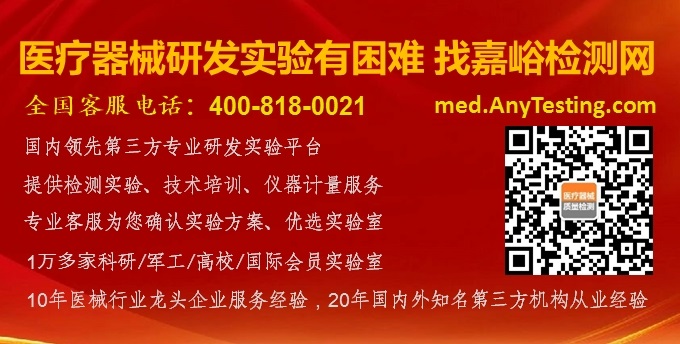您当前的位置:检测资讯 > 科研开发
嘉峪检测网 2024-11-29 17:19
目前FDA 510(k)提交方式有三种:传统、特殊以及简略型,“基于安全和性能途径” (The safety and Performance Based Pathway)是简略型510(k)的一种可选途径,适用于某些广为人知、且易于理解的器械类型。制造商通过证明申报器械符合FDA确定的性能标准,以证明该器械与已合法上市的器械一样安全有效。
FDA规定当器械符合以下两点要求时,则可使用基于安全和性能途径的方式进行实质等同性论证:1)申报器械与对比器械具有相同的适应证和技术特征,不会引发不同的安全性和有效性问题;2)申报器械满足FDA确定的所有性能准则。目前FDA已发布包括骨科非脊柱金属骨螺钉和垫圈在内的共15类器械可通过基于安全和性能的途径进行上市前提交。今天我们就来介绍于2024年11月21日发布的《骨科非脊柱金属骨螺钉和垫圈-基于安全和性能途径的性能标准》。
范围
从监管范围:受 21 CFR 888.3040 和 21 CFR 888.3030 监管,产品代码为WHC、HTN、NDG的 II 类非脊柱金属骨螺钉和垫圈。
从预期用途:骨螺钉用于骨科非脊柱骨折固定、截骨或小关节融合或关节固定,垫圈仅用于与骨螺钉配合使用,以帮助分散螺钉头/骨界面的负荷。此外,用于下颌、颌面、颅骨和眼眶骨折固定等其他部位的,或与缝合线等装置一起使用骨螺钉或垫圈均不属于本指南的范围。
从器械设计特征:骨螺钉设计多种多样,但符合以下FDA认可的共识标准,则属于本指南的范围:
• ASTM F136 Standard Specification for Wrought Titanium-6Aluminum-4Vanadium ELI (Extra Low Interstitial) Alloy for Surgical Implant Applications (UNS R56401)
• ASTM F1472 Standard Specification for Wrought Titanium-6Aluminum-4Vanadium Alloy for Surgical Implant Applications (UNS R56400)
• ASTM F1295 Standard Specification for Wrought Titanium-6Aluminum-7Niobium Alloy for Surgical Implant Applications (UNS R56700)
• ASTM F67 Standard Specification for Unalloyed Titanium, for Surgical Implant Applications (UNS R50250, UNS R50400, UNS R50550, UNS R50700)
• ASTM F138 Standard Specification for Wrought 18Chromium-14Nickel 2.5Molybdenum Stainless Steel Bar and Wire for Surgical Implants (UNS S31673)
• ASTM F139 Standard Specification for Wrought 18Chromium-14Nickel 2.5Molybdenum Stainless Steel Sheet and Strip for Surgical Implants (UNS S31673)
• ASTM F1537 Standard Specification for Wrought Cobalt-28Chromium-6Molybdenum Alloys for Surgical Implants (UNS R31537, UNS R31538, and UNS R31539)
测试性能标准
通过“基于安全和性能途径”递交的申请,除为以下每项测试或评估提交符合性声明资料外,还应提交评估测试的结果摘要等资料作为510(k)的一部分提交。必要时,FDA将对申报器械符合FDA确定的性能标准和测试方法的基本数据进行审查。
机械台架测试:应按照FDA目前认可的ASTM F543 版本Standard Specification and Test Methods for Metallic Medical Bone Screw进行,并对代表最坏情况的最终螺钉设计版本进行所有测试,且阐述如何确定最坏情况设计的理由。此外,还应使用工程分析的方法,通过扭转强度测试、驱动扭矩测试以及轴向拉伸强度测试来评估骨螺钉的轴向拉伸强度,具体验收标准可结合本指南及ASTM F543指南。
灭菌(标记为无菌的器械)和再处理(终端用户灭菌)验证测试:应证明器械及其特定仪器的清洁度和无菌度,或清洁和灭菌能力达到 10-6 的无菌保证水平。制造商应向FDA提交包装(无菌屏障系统)及其如何保持器械无菌的说明、包装测试方法的说明(但不包括包装测试数据)。测试方法应按照FDA目前认可的下列共识标准版本,包括但不限于:
• International Organization for Standardization (ISO) 17665 Sterilization of health care products – Moist heat - Requirements for the development, validation, and routine control of a sterilization process for medical devices
• ISO 11135 Sterilization of health care products – Ethylene oxide - Requirements for development, validation, and routine control of a sterilization process for medical devices
• ISO 11137-1 Sterilization of health care products - Radiation - Part 1: Requirements for development, validation, and routine control of a sterilization process for medical devices
• ISO 11137-2 Sterilization of health care products - Radiation - Part 2: Establishing the sterilization dose
• ISO 11137-3 Sterilization of health care products - Radiation - Part 3: Guidance on dosimetric aspects of development, validation and routine control
• ISO/TS 11137-4 Sterilization of health care products - Radiation - Part 4: Guidance on process control
• ISO 13004 Sterilization of health care products - Radiation - Substantiation of selected sterilization dose: Method VDmaxSD
• ISO 11607-1 Packaging for terminally sterilized medical devices – Part 1: Requirements for materials, sterile barrier systems and packaging systems
• ISO 11607-2 Packaging for terminally sterilized medical devices – Part 2: Validation requirements for forming, sealing and assembly processes
• ASTM F88/F88M Standard Test Method for Seal Strength of Flexible Barrier Materials
• ASTM F3039 Standard Test Method for Detecting Leaks in Nonporous Packaging or Flexible Barrier Materials by Dye Penetration
• ASTM F2096 Standard Test Method for Detecting Gross Leaks in Packaging by Internal Pressurization (Bubble Test)
• ISO 20857 Sterilization of health care products — Dry heat — Requirements for the development, validation and routine control of a sterilization process for medical devices
生物相容性评估:应按照指南《Use of International Standard ISO 10993-1, “Biological evaluation of medical devices – Part 1: Evaluation and testing within a risk management process》(以下简称FDA生物相容性指南)附录A部分来确定作为生物相容性评估中的部分生物相容性终点。FDA认为本指南所涵盖的器械被归类为与组织/骨骼接触的植入式器械,且接触时间超过30天,因此需对细胞毒性、致敏性、刺激性或皮肤内反应性、急性全身毒性、材料介导的热原性、亚急性/亚慢性毒性、遗传毒性、植入、慢性毒性、致癌性共十项终点进行评价。
只有申报器械与对比器械相比具有相同的原材料、制造工艺、组织接触类型和持续时间,且几何形状的任何变化预计不会影响生物反应的情况下,同时提供 FDA 生物相容性指南附录 F 中概述的文件,通常就足以确定生物相容性方面实质上等同。若制造商需要进行测试以解决某些或所有已确定的生物相容性终点问题,FDA 建议为所有已进行的测试提供完整的测试报告。任何特定试验的阳性、阴性和/或试剂对照均应达到预期的性能,试验方案的偏离应予以详细描述并说明理由。注意:某些试验方案的偏离可能会使与生物相容性性能标准的比较失效,因而被要求提交传统报告。
参考资料:
1. Orthopedic Non-Spinal Metallic Bone Screws and Washers – Performance Criteria for Safety and Performance Based Pathway
2. Safety and Performance Based Pathway - Guidance for Industry and Food and Drug Administration

来源:苏大检测


